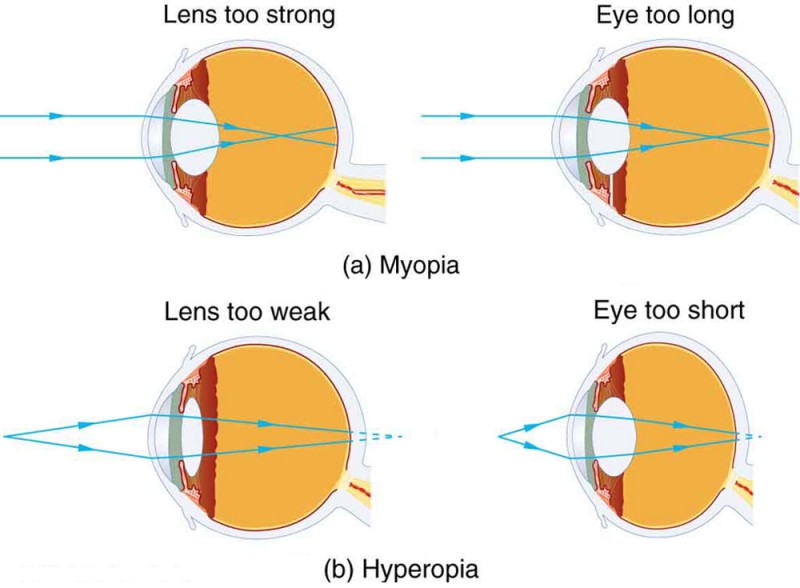Astigmatism, often abbreviated as “Astig,” is a common refractive error that affects how light enters the eye, leading to blurred or distorted vision. While many people have heard of this condition, few truly understand its causes, symptoms, and impact on daily life. In this article, we will delve into what astigmatism is, explore its underlying causes, and discuss how it affects vision.

What Is Astigmatism?
Astigmatism occurs when the cornea or lens of the eye has an irregular shape. Normally, the cornea and lens are smooth and evenly curved, allowing light to focus precisely on the retina at the back of the eye. However, in individuals with astigmatism, the surface of the cornea or lens is more oval-shaped than round. This irregularity prevents light from focusing correctly, causing images to appear blurry or stretched out.
This condition can occur in combination with other refractive errors such as nearsightedness or farsightedness. It is not a disease but rather a natural variation in the way the eye is shaped. People of all ages can have astigmatism, and it often runs in families.
Types of Astigmatism
There are two main types of astigmatism, classified based on the location of the irregular curvature:
- Corneal Astigmatism: This type occurs when the cornea has an uneven curve. It is the most common form of astigmatism.
- Lenticular Astigmatism: In this case, the irregularity lies in the lens of the eye rather than the cornea.
Both types result in similar visual symptoms, but their treatment may vary depending on the specific cause and severity.
Causes of Astigmatism
The exact cause of astigmatism is not fully understood, but several factors contribute to its development. These include genetic predisposition, changes in the eye over time, and certain medical conditions.
Genetic Factors
Astigmatism often runs in families, suggesting a strong genetic component. If one or both parents have astigmatism, their children are more likely to develop the condition. The shape of the cornea and lens is determined by genetics, and any inherited irregularities can lead to astigmatism.
Changes in the Eye Over Time
As people age, the structures of the eye can change, potentially leading to astigmatism. For example, the cornea may become less elastic or develop slight irregularities due to wear and tear. These changes are more common in older adults and can contribute to the onset of astigmatism later in life.
Medical Conditions and Injuries
Certain medical conditions and injuries can also cause astigmatism. For instance:
- Keratoconus: This progressive condition causes the cornea to thin and bulge into a cone-like shape, leading to severe astigmatism.
- Eye Surgery: Procedures such as cataract surgery or corneal transplants can alter the shape of the cornea, resulting in astigmatism.
- Injuries: Trauma to the eye, such as a scratch or impact, can damage the cornea or lens and lead to irregular curvature.
Symptoms of Astigmatism
The symptoms of astigmatism can vary depending on the severity of the condition. Some people may experience mild discomfort, while others may find their vision significantly impaired. Common symptoms include:
- Blurred or distorted vision at all distances
- Headaches
- Eyestrain or discomfort, especially after prolonged visual tasks like reading or using a computer
- Difficulty seeing at night or in low-light conditions
- Squinting to see clearly
It is important to note that these symptoms can also be associated with other eye conditions. Therefore, anyone experiencing them should consult an eye care professional for a comprehensive examination.
How Astigmatism Affects Vision
Astigmatism impacts vision by disrupting the way light focuses on the retina. To understand this better, let us explore how the eye normally processes light and how astigmatism interferes with this process.
The Normal Process of Vision
In a healthy eye, light enters through the cornea and passes through the lens. Both the cornea and lens work together to bend light rays so they focus directly on the retina. The retina then converts these light signals into electrical impulses, which are sent to the brain via the optic nerve. The brain interprets these signals as clear, sharp images.
The Impact of Astigmatism
In an eye with astigmatism, the irregular shape of the cornea or lens prevents light from focusing evenly on the retina. Instead, light rays are scattered, causing multiple focal points. This scattering results in blurred or distorted vision, regardless of whether the object being viewed is near or far.
For example, someone with astigmatism might notice that straight lines appear wavy or that objects look stretched out horizontally or vertically. This distortion can make everyday tasks, such as reading or driving, more challenging.
Diagnosing Astigmatism
Diagnosing astigmatism typically involves a comprehensive eye examination conducted by an optometrist or ophthalmologist. During the exam, the eye care professional will assess the overall health of the eye and determine the degree of astigmatism present.
Common Diagnostic Tests
Several tests are used to diagnose astigmatism, including:
- Visual Acuity Test: This test measures how well a person can see at various distances using an eye chart.
- Keratometry: This test measures the curvature of the cornea to identify any irregularities.
- Refraction Test: Using a device called a phoropter, the eye care professional determines the exact prescription needed to correct the astigmatism.
- Corneal Topography: This advanced imaging technique creates a detailed map of the cornea’s surface, helping to identify subtle irregularities.
These tests provide valuable information about the type and severity of astigmatism, guiding the development of an appropriate treatment plan.
Treatment Options for Astigmatism
While astigmatism cannot be cured, it can be effectively managed with various treatment options. The choice of treatment depends on the severity of the condition and the individual’s lifestyle preferences.
Corrective Lenses
Corrective lenses are the most common treatment for astigmatism. These include:
- Glasses: Prescription glasses with special cylindrical lenses can compensate for the irregular curvature of the cornea or lens.
- Contact Lenses: Toric contact lenses are specifically designed to correct astigmatism. They have different powers in different meridians of the lens to address the uneven focus.
Both options are effective, but some people prefer contact lenses for their aesthetic appeal or active lifestyles.
Refractive Surgery
For those seeking a more permanent solution, refractive surgery may be an option. Procedures such as LASIK (Laser-Assisted In Situ Keratomileusis) and PRK (Photorefractive Keratectomy) reshape the cornea to improve its curvature. These surgeries can significantly reduce or eliminate the need for corrective lenses.
However, refractive surgery is not suitable for everyone. Candidates must meet specific criteria, and potential risks and benefits should be carefully discussed with an eye care professional.
Orthokeratology
Orthokeratology, or ortho-k, involves wearing specially designed rigid gas-permeable contact lenses overnight. These lenses temporarily reshape the cornea, correcting astigmatism and other refractive errors. While the effects are reversible, ortho-k can be a good option for individuals who prefer not to wear glasses or contacts during the day.
Living with Astigmatism
Living with astigmatism does not have to be a hindrance. With proper diagnosis and treatment, most people can enjoy clear and comfortable vision. Regular eye exams are essential to monitor the condition and ensure that corrective measures remain effective.
In addition to professional care, individuals with astigmatism can take steps to protect their eye health. These include:
- Wearing sunglasses to shield the eyes from harmful ultraviolet rays
- Taking breaks during prolonged screen use to reduce eyestrain
- Maintaining a balanced diet rich in vitamins and nutrients that support eye health
By staying informed and proactive, people with astigmatism can manage their condition effectively and maintain a high quality of life.





